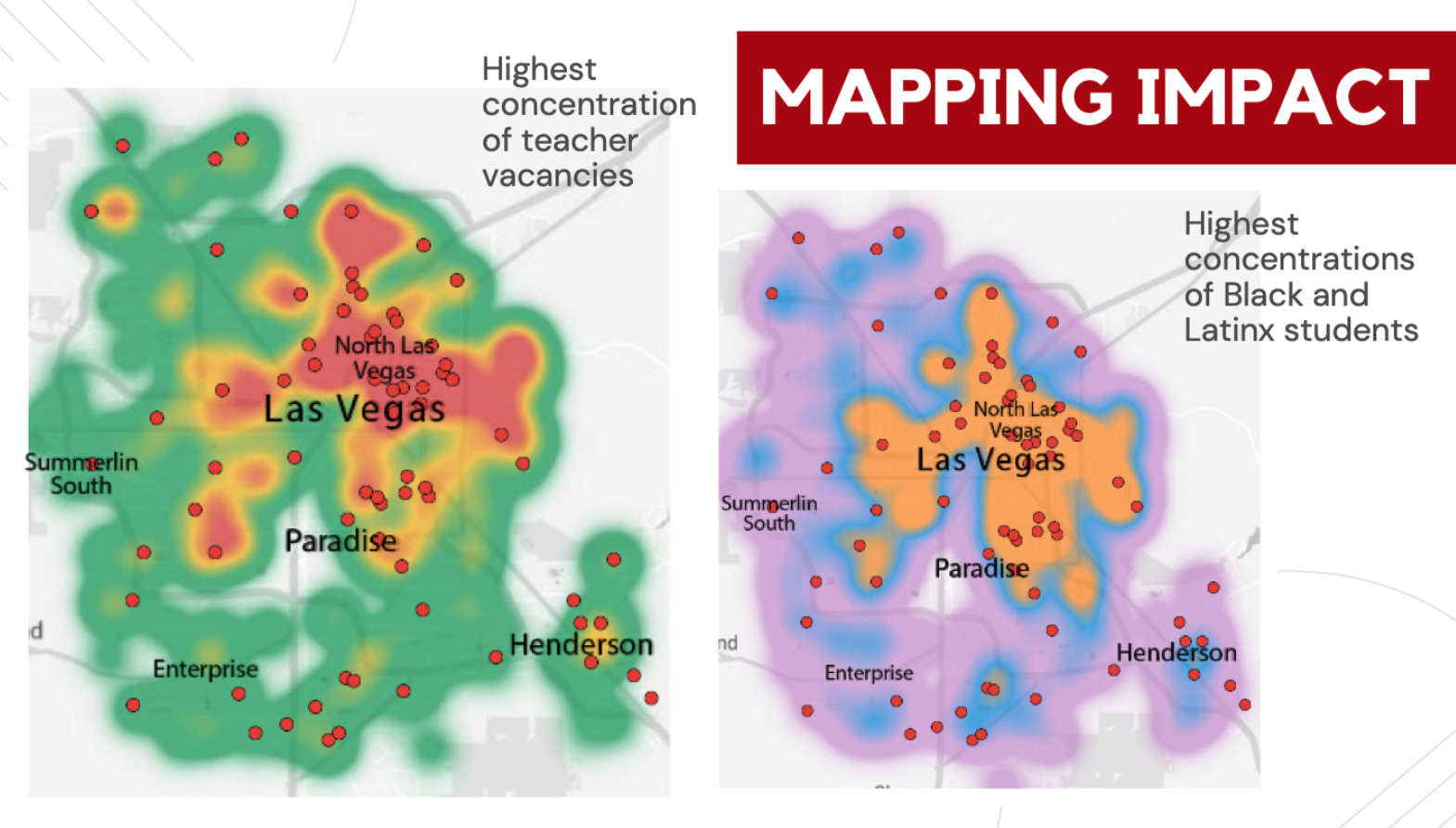Outcomes
The first cohort of candidates will complete its two-year commitment this year. However, the program followed the same structure prior to earning the official “apprenticeship” designation, and it saw and maintained a 94% graduation rate (with 62% students of color), compared to a 50% graduation rate from the traditional prep program during the same time period (with a comparable proportion of students of color). For candidates who graduated from the apprenticeship-style program, 90% are still working in the classroom three years later.

The program maps where its teachers take jobs and finds that graduates largely choose to work in schools with high vacancy rates and high proportions of students of color. These are often the schools in which apprentices completed training or very similar schools. One of the greatest benefits is that the paraprofessionals are often already familiar with the community and like working with the students in these schools, and so the program does not see reports of disciplinary issues with students.
“In a time of high teacher shortages, which particularly cripple Title I schools, looking inside the walls of the school to paraprofessionals who show up every day and love these settings is a natural fit—these apprentices know their community, know the students and families, and are ideal to stay committed in these settings for the long haul. That commitment serves Nevada schools well.”Dr. Kenneth Varner, professor & associate dean for academic programs & initiatives
Advice
Expand your idea of who can be a teacher and how to help them get there: Dr. Varner encourages prep programs, “Think about who isn’t at the table in your traditional programs but wants to be there: paraprofessionals and community members who have demonstrated a desire. Then think about what keeps them from being at the table. What you will find is that efforts to eliminate barriers for those folks sets you up in an ideal way to be an apprenticeship program where practice is the heart of a community of educators you can build.”
Prep programs should ask themselves if they’re taking these steps to engage with paraprofessionals:
- Do you talk meaningfully with paraprofessionals to recruit them?
- If you do recruit paraprofessionals, how do you onboard them in a way that helps them succeed in the program and addresses what hasn’t worked for them?
- Have you ensured the most flexibility in the program to accommodate working people who are often parents with flexible, online, and supportive coursework?
- Have you provided concierge supports to your students to reduce their engagement with the bureaucracy of the institution—registering, paying the bill, and ensuring they focus on their classes and not institutional structures?
- Do you provide embedded professional development beyond coursework to instill the reflex of lifelong learning and continued inquiry?
- Have you paid their bills, finding the funding to make the program available with no out-of-pocket costs?
- And finally, have you created a post-program support structure to follow your apprentices for at least three years, the most critical time of their career?
All focus areas
References
- Nevada Advisory Committee to the U.S. Commission on Civil Rights. (2024). Teacher and professional staff shortages and equity in education. https://www.usccr.gov/files/2024-01/teacher-and-professional-staff-shortages-and-equity-in-education-report.pdf

